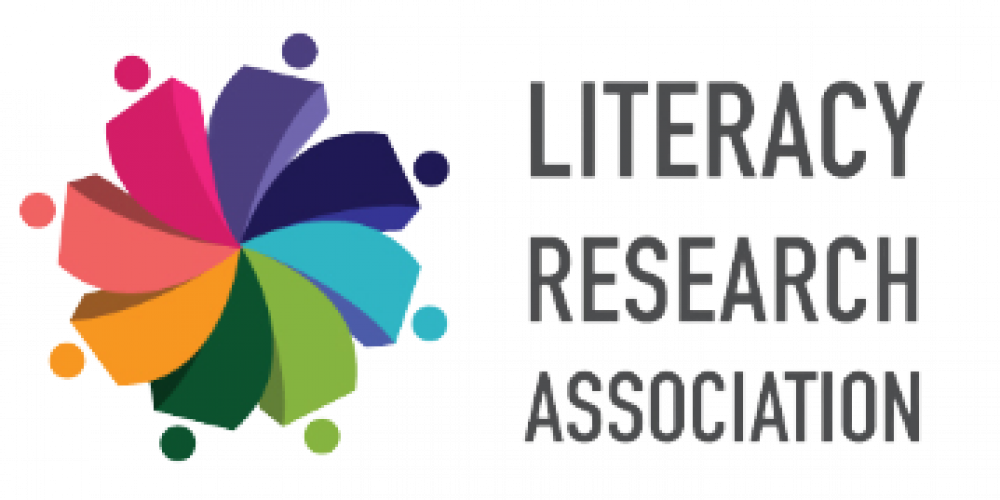The Science of Reading and the Media: Is Reporting Biased?
Maren Aukerman, The University of Calgary
At least two questions are critical for assessing journalistic quality. First, does the writing exhibit bias that distorts the truth? And, second, does the writer understand the topic deeply enough to report on it accurately? In the field of reading education, these issues have come to the fore with a recent explosion of journalism about the “science of reading.” 1 2 3 Teachers, policymakers, and parents hunger for information about good reading instruction, yet journalism on the topic can be grossly oversimplified. In a three-part Critical Conversations series, I examine how well-intentioned journalism about the “science of reading” is frequently biased and inadequately research-based, ultimately making the case that such reporting has damaging consequences for the teaching of early reading. In this article, the first of the series, I highlight media bias.
From how much of the media tells it 4, a war rages in the field of early literacy instruction. The story is frequently some version of a conflict narrative relying on the following problematic suppositions:
- a) science has proved that there is just one way of teaching reading effectively to all kids – using a systematic, highly structured approach to teaching phonics;
- b) most teachers rely instead on an approach called balanced literacy, spurred on by shoddy teacher education programs;
- c) therefore, teachers incorporate very little phonics and encourage kids to guess at words;
- d) balanced literacy and teacher education are thus at fault for large numbers of children not learning to read well.
Unfortunately, these suppositions turn out to be highly misleading. The problem is not with recognizing that teaching phonics can play a facilitative role in having children learn to read; that insight is, indeed, important, if not particularly new 5. The problem is that this narrative distorts the picture to the point that readers are easily left with a highly inaccurate understanding of the so-called “science of reading.”
Here, I present four types of bias errors in “science of reading” journalism. To discuss these, I examine an article from the New York Times (NYT) by Dana Goldstein in 2022. It focuses on Lucy Calkins, a professor who authored a popular literacy curriculum called Units of Study 6. The article is intensely critical of Calkins’s work and zeroes in on her recent decision to add more explicit phonics to her curriculum as a “major retreat” tantamount to admitting serious flaws in the previous version.
I note for the record that I do not know Calkins, have never used her curriculum, and agree that her program (like any) can benefit from critique. My concern is with the nature of the reporting by Dana Goldstein, an NYT national correspondent. I chose this article because it appears in an otherwise reputable newspaper, but the errors that render it profoundly flawed are widespread in education journalism.
I present these bias errors partly as a call to action for reporters; they have the responsibility and opportunity to decrease divisive rhetoric that has increasingly come to dominate discourse about early literacy instruction 7. I also hope that, by offering recommendations on how to identify errors, this article might help readers assess journalistic bias.
Bias Error 1: Lack of Balance in Reporting
The “guru” reference in the title of the NYT article is dismissive, and the article continues in the same tone. It quotes five individuals sharply critical of Calkins, while including no positive or even nuanced views. Three are sources that Goldstein 8 already drew upon in an earlier article, raising questions about how well she represents a spectrum of perspectives. Calkins herself was interviewed, but her quotes were arguably selected in ways that contribute to a lack of balance (the longest begins with “All of us are imperfect”). A curriculum as popular as Calkins’s program does not get that way without strengths that stakeholders find meaningful; that needs acknowledgment.
Recommendation: Be wary of “science of reading” news that fails to include and fairly represent a range of perspectives.
Bias Error 2: Sensationalistic “Straw Man” Arguments
The NYT article states: “Some children seem to turn magically into readers…. That has helped fuel a mistaken belief that reading is as natural as speaking” 9. This “mistaken belief” is attributed to no named human beings, and no evidence is presented that Calkins holds this belief.
Whether or not Goldstein knows it, the source of this idea is likely a 1976 essay by Ken and Yetta Goodman. (Even back then, there was nuance in the premise: the Goodmans noted that “teaching children to read is not putting them into a garden of print and leaving them unmolested;” see p. 459.) But to the present point: nowadays, few reading researchers or teachers embrace anything like the “reading is as natural as speaking” premise.
In reality, there is considerable common ground among literacy educators that reading should be deliberately taught, and specifically that most students benefit from explicit instruction in decoding. Where perspectives vary, they are not characterized by absolutes such as “let students figure out reading by themselves,” or “phonics is a waste.” Goodwin, editor of the flagship research journal Reading Research Quarterly, which recently ran two full special issues about the science of reading 10 11, put it this way:
The version of the science of reading that has been presented in the media is very narrow, focusing mainly on alphabetics, phonics, and word reading. It’s also pretty directive, telling teachers that if they want to help kids learn to read, then they should do this, not that. But when we invited researchers to propose and submit articles on the science of reading, that’s not how they defined it…. I just don’t see anybody talking about a battle between science and non-science. 12
Yet, media rhetoric continues to hype the supposed dichotomy 13. In doing so, articles like Goldstein’s 14 15 16 conjure a protagonist (“the science of reading”) and an enemy (“balanced literacy”) characterized as anti-phonics and anti-science. It is important, then, to distinguish between the “science of reading” often presented in the press (“popular SOR”), and actual research-based science of reading (“research-based SOR”).
To be sure, a few academics (often folks who do not do classroom-based research) have fed the “popular SOR” narrative. For example, cognitive scientist Seidenberg 17 has blogged the incendiary claim that most teachers are never exposed to “facts about the bases of reading skill” due to bad teacher education. More recently, his blog highlighted his own contribution to the Reading Research Quarterly special issue on the science of reading 18 – while completely ignoring other research contributions to that issue, including ones counter to his views 19.
But outright dismissals of balanced literacy come perhaps most of all from members of the public (see, for example, Letter to the Lindbergh Board, 2019), including parents and teachers, whose perspectives appear to have been shaped by polarizing media accounts 20 and literacy websites with a questionable research basis 21. The dichotomous worldview of “popular SOR” in public discourse is arguably in part thanks to media reporting.
Recommendation: Be wary of “science of reading” news that demonizes an approach (e.g., balanced literacy) and/or creates dichotomies of good and bad.
Bias Error 3: A Myopic Lens Fetishizing Phonics Instruction
Myopia- that is, shortsighted vision that misses the larger picture – abounds in popular SOR. The NYT article (Goldstein, 2022) does briefly state (without citation) that “research points to a broad set of skills necessary to become a literate person – including phonics, vocabulary, and knowledge of current events, history, art, sports, and nature.” Yet the alluded-to “broad set of skills” is not broad; it represents nowhere near the range of domains that the reading research community emphasizes22 23 24. For example, students should develop dexterity in decoding, comprehension, using texts for real-life purposes, and critical reading; and they should develop literate dispositions such as reading motivation. 25 Research-based SOR examines all these areas, and robust bodies of research address equally vital literacy domains, like writing development, oral language development, the development of English as an additional language, and identity-related aspects of literacy development given that children bring who they are (including varied identities and racial/socioeconomic backgrounds) to bear on their reading.
But, in popular SOR, everything but phonics gets short shrift. There are 86 mentions of phonics instruction in Hanford’s (2019) media report 26 claiming to explain why reading instruction in the United States is inadequate, and only a single reference to any other aspect of literacy. The NYT article (Goldstein, 2022) follows a similar pattern: aside from scattered mentions of having children read complex text, only phonics is given attention. Reporting with such a laser focus on phonics, often circulated widely 27, crowds from view many core aspects of literacy. Developing children’s ability to understand, to imagine, and to think critically about text? Ignored. Developing their capacity to discuss and make reasoned text-based arguments? Ignored. Developing their reading motivation, which is associated with better comprehension? 28 Ignored. In crowding out so much else that is vital, such reporting works counter to the goal of moving the fuller body of reading research into classroom practice.
Recommendation: Be wary of “science of reading” news that zeroes in on phonics (or any highly limited slice of reading instruction) rather than building a well-rounded picture of literacy learning.
Bias Error 4: Logical Fallacies
The NYT article (Goldstein, 2022) contains this troubling statement:
Goldberg, a Bay Area literacy coach and leader in the science of reading movement, said Professor Calkins’s [recent curricular] changes cannot repair the harm done to generations of students. Even before the pandemic widened educational inequality, only one-third of American fourth and eighth graders were reading on grade level.
One journalistic problem here is that exactly zero evidence was requested of the person interviewed to support that accusation of harm. Moreover, none was provided by Goldstein to support the implication that Calkins’s curriculum was at fault for students reading below grade level. The two ideas are juxtaposed so as to suggest a relationship, but the journalist fails to empirically establish any causal link. In point of fact, reading scores on the National Assessment of Educational Progress 29 were actually 12 points higher in 2020 than they were in 1971 (before Calkins’s program even existed). If test results indicate a crisis, it long preceded Calkins and cannot fairly be attributed to her.
I could find no evidence for this claim of harm anywhere else, either. The reality is that in classrooms without much systematic phonics, most children also learn to read 30, and proficient readers from such classrooms show no word reading or comprehension disadvantages over those in classrooms with more systematic phonics instruction. In fact, they can read more fluently than proficient readers from classrooms where the phonics was more systematic, presumably because of more practice reading real texts. 31 Even Shanahan, a reading researcher skeptical of the kind of decoding instruction that Calkins’ materials previously included, concedes that there is no evidence that such instruction causes harm. 32
Recommendation: Be wary of “science of reading” news that contains wild leaps of logic unsupported by actual evidence presented.
These four errors (lack of balance, straw man arguments, myopic lenses, and logical fallacies) might seem puzzling, particularly in well-known publications: how could conscientious journalists fall prey to them? The reality is that some journalists reporting on education may have an insufficiently robust understanding of the field of reading research themselves, which can make it harder to engage in rigorous reporting. Look for additional posts forthcoming on Critical Conversations for more in-depth discussion of this problem.
Maren Aukerman is a Werklund Research Professor at the University of Calgary who focuses on literacy education and democratic citizenship. She studies educational ethics, how youth engage with information in the media, and the preparation of students for responsible citizenship and democratic dialogue, particularly in the context of literacy education. Aukerman previously was on the faculty at Stanford and the University of Pennsylvania and is the recipient of a National Academy of Education/Spencer Postdoctoral Fellowship as well as the 2009 Albert J. Harris Award and the 2018 Dina Feitelson Research Award from the International Literacy Research Association. In her current work, she is studying how young people make sense of COVID-19 information that they encounter, with a special emphasis on what they do and do not find trustworthy as information sources.
Photo by Christian Lue on Unsplash



